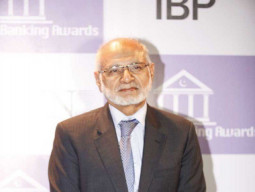
Pakistan’s banking sector is peculiar. It doesn’t do much lending: credit to the private sector is around 15% of GDP vs 45-50% of GDP in India and Bangladesh. It is also relatively small. According to the World Bank, Pakistani banks’ assets (as a share of GDP) are around 30% smaller than those of its South Asian peers. And, to top it off, it is relatively stagnant, with domestic banking sector assets growing at only half the pace of regional banks since 2000.
Yet, the surprising fact is that Pakistani banks’ profitability regularly matches or exceeds that of banks in other South Asian countries. Measured by after-tax return on equity, the returns of Pakistani banks have been around eight percentage points higher than regional peers over the last five years.
This points to a deep-rooted dysfunctionality in the financial sector. Understanding and remedying this dysfunctionality is significantly important. There is plenty of evidence suggesting that it is rare for a country to prosper without a well-functioning, built-for-purpose financial sector.
So how, and why, does a banking sector which doesn’t do much banking make so much profits? And what should be done about it?
The how is well-known: instead of lending to the private sector, banks lend to the government to earn attractive rates of return on government bonds while paying low interest rates to depositors. The ability to do this requires a complicit government which is ready to borrow in large amounts. It is a classic case of what economists call ‘crowding out’, whereby government borrowing leaves little room for private-sector credit.
The why is a bit more complicated. Partly, it’s crowding out. But it is also a case of perverse incentives.
A little context is important here: Pakistan’s banking sector was privatised and liberalised in the 1990s to fix a moribund sector saddled by bad loans and low profitability. But due to the absence of complementary reforms to strengthen regulation and increase financial inclusion, the privatisation experiment has been anticlimactic. Banks have responded to these circumstances rationally, and rationality here means earning profits the easy way.
Keeping in mind the diagnosis above, a remedial strategy would involve the following four factors:
First, stop the crowding out. For this, the budget deficit needs to decrease, but the government also needs to find alternative sources of funding. An effort to include rupee-denominated bonds in global bond indices would be one way to create international demand for local debt whilst also increasing foreign exchange reserves.
Second, setting more ambitious regulatory targets on financial inclusion. Pakistan significantly lags behind Bangladesh and India on several metrics here, including the percentage of population with an account (18% vs 80% in India). Therefore, ambitious targets to increase the accessibility of banking services, particularly in rural areas, should be set, with appropriate regulatory action for failure.
Third, introduce targeted monetary policy incentives to increase lending. In the UK, the Bank of England launched the Funding for Lending scheme in the aftermath of the financial crisis to incentivise bank lending. This scheme provided favourable funding for banks if certain criteria for private sector lending were met. The State Bank (SBP) could so something similar. This policy, however, requires careful calibration to avoid unintended inflationary consequences.
Fourth, establishing a joint public-private Naya Industrial and Infrastructure Bank (NIIB). National Development Banks (NDBs) have been successful in countries from Germany to South Korea to facilitate the development process. They provide financing for long-term projects which the private banking sector is unable to fulfil due to the high risks and time horizons involved.
But a fully state-owned development bank is probably not a feasible solution for Pakistan. The country’s experience with nationalised banks has been largely unsuccessful. Importantly, risks of state-owned banks being misused for political purposes are high, the cost of which can be debilitating as Brazil is witnessing.
Therefore, a public-private partnership bank would aim to combine the best elements of professional private sector management alongside the developmental role of the state, focusing on large-scale projects beyond the scope of extant private commercial banks. This model is by no means unique: around a quarter of the world’s national development banks have some private sector ownership.
The NIIB would have the following six features, among others:
1) An ownership structure comprising 50% private commercial banks and 50% public sector (representing federal and provincial governments); 2) Fully professional management and staff, with no operational interference from government; 3) The bank should be run on a commercially sustainable basis without direct government support; 4) Lending criteria should include environmental and social factors, with priority to projects in lower-income areas; 5) The bank should be eligible for concessionary funding from the SBP; and 6) An aim to co-invest in projects to unlock private and international sources of funding.
The PTI’s manifesto includes several aims consistent with the above, including a commitment to increase financial inclusion and infrastructure lending. But, given the complexity of the financial sector, a coherent strategy rather than fragmented approach is required. A piecemeal approach is likely to end like the liberalisation experiment of the 1990s, whereas a well-executed strategy could set the stage for rapid growth in years to come.
Published in The Express Tribune, September 4th, 2018.
Like Opinion & Editorial on Facebook, follow @ETOpEd on Twitter to receive all updates on all our daily pieces.

































































COMMENTS (5)
Comments are moderated and generally will be posted if they are on-topic and not abusive.
For more information, please see our Comments FAQ